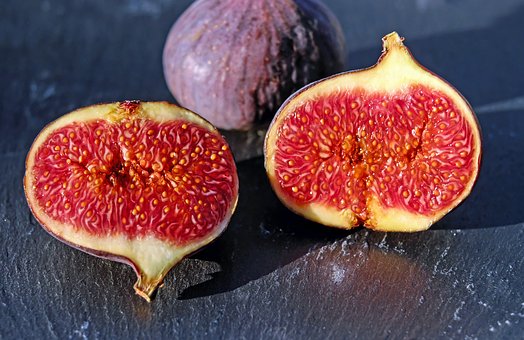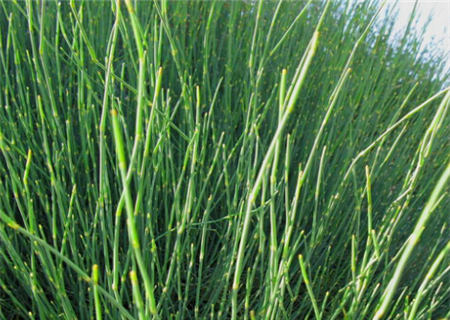Fig potted planting technique: what kind of variety is good? How can it bear fruit? If you master these points, you can grow easily.
Figs, also known as milk berries, honey fruits, asparagus fruits, etc., are a kind of fruit with anti-cancer effect, which is very suitable for planting in the courtyard and balcony, and will bear fruit all over the branches after flowering. Which variety of potted figs is good? How can it bear fruit?

What is a good variety of potted figs?
Potted figs should choose varieties with bright fruit color and moderate growth. Pot special varieties such as red dwarf, A42 and so on are the best, as well as Japanese purple fruit, purple light and Shengguo No. 1 A42.
Second, how to raise potted figs?
1, flowerpot selection: fig root system is very developed, generally planted in a week or so will take root, and with the continuous growth of the plant, the root system will become more and more developed, can cover the whole flowerpot, therefore, when choosing flowerpots, try to choose large flowerpots, which is good for root growth.
2. Soil: figs like to grow in soil with fertile soil and good air permeability, so when selecting soil, we can choose sand or fertile clay, and when adding soil, we can add a small amount of organic fertilizer such as chicken manure and cake fertilizer to promote root system to absorb nutrients and promote flowering and fruiting.
3. Watering: figs do not have high requirements for moisture, as long as they keep the soil moist. The specific watering methods are as follows:
(1) in spring, you only need to keep a certain amount of moisture.
(2) watering frequently in summer, so as to prevent the basin soil from drying, the root system can not absorb water, causing branches and leaves to wither and affect the results, but in watering, it must not be watered thoroughly at once, but should be watered once in the morning and evening, and it is best to water near the edge of the flowerpot.
(3) in autumn, the moisture can be reduced properly to prevent the fruit from cracking and affect the fruit.
(4) in winter, figs go into dormancy and can be watered flexibly according to indoor temperature.
(5) if it comes to the overcast and rainy season, the moisture should be controlled so as to avoid excessive moisture, overflow and waterlogging.
4. shaping and pruning: figs grow faster, especially the new shoots around them grow the fastest, so in order to promote the nutrient uniformity of each branch and look good, it is best to prune it in time. When pruning, it is best to cut off all the surrounding residual branches, dense branches, diseased branches and so on.
The specific pruning method is to cut off the main branches when the fig seedlings grow to about 20cm, in order to facilitate better maintenance in the later stage and promote the branches of each side. In addition, you can also trim different shapes according to your preferences, but you must pay attention to the uniformity of the main branches and side branches.
5. Keep warm: figs are afraid of cold, so in late autumn or winter, move them to a warm environment and let them absorb sunlight at the right time, so that the plants can survive the winter safely. In addition, in winter, figs go into dormancy, with less demand for nutrients and stagnant growth, but in order to blossom and bear fruit the next year, it is best to water them flexibly according to indoor temperature.
6. Pest control
During the growth of figs, diseases and insect pests are less harmful, and fruit anthracnose, root-knot nematodes or mulberry longicorn beetles can occur.
(1) Mulberry longicorn beetles: Mulberry longicorn beetles are relatively common pests. Generally, apple, peach, apricot and other fruit trees are harmed. The damage rate is generally as high as 50%, and serious ones can be as high as 90%. So if you want to prevent this pest, you need to take control measures in advance. The plants that have been killed can be blocked with poison swabs, or removed with dichlorvos EC, chlorpyrifos and other agents.
(2) Root-knot nematodes: root-knot nematodes are mainly harmful to the roots of plants, and species diseases are also common, so continuous cropping should be avoided and seedlings should be quarantined and disinfected at the right time. If there are conditions, it is best to disinfect the soil.
(3) anthracnose of fruit: anthracnose mainly harms leaves, causes fruit to rot gradually, and affects yield. Therefore, when planting figs, try to spray 200 times lime Bordeaux solution or 75% chlorothalonil 600 times 800 times solution as early as possible before the onset of disease in summer and autumn, and the safe interval of the latter application (days from the last application to harvest) is 7-14 days.
3. Key points for attention in potted fig planting:
1. Fertilization: fig has a low demand for fertilizer, which can be fertilized from late March to late August, but when applying fertilizer, it is best to choose organic fertilizer, so that the fruit has good taste and high sugar content. Can also be applied with chemical fertilizer, pay attention to the amount is not too large, with light fertilizer frequently is appropriate.
2. Watering: the moisture requirement of potted figs is that the surface is not dry and not watered, but thoroughly watered. So just keep the basin soil moist, but if it comes to summer or winter, it should be watered flexibly according to the actual situation.
Temperature: figs are neither cold-resistant nor heat-resistant, so if the winter temperature is lower than-5 ℃, keep them warm, put them in the greenhouse, and water them at the right time. When the temperature is higher than 38 degrees in summer, it should be moved to a cool and ventilated environment, so as not to cause the leaf surface to wither and affect the growth.
Time: 2019-04-07 Click:
- Prev

What are the side effects of ephedra, a medicinal plant? Attached planting techniques and pharmacological uses
What side effects does ephedra have? Ephedra poisoning initially showed symptoms of central and sympathetic excitement, such as restlessness, nervousness, headache and dizziness, tinnitus and insomnia, nausea and vomiting, epigastric discomfort, thirst and sweating, elevated blood pressure, dilated pupils, palpitation, shortness of breath, precordial pain.
- Next

Cultivation techniques of Golden Dragon with eight claws
Cultivation techniques of Golden Dragon with eight claws
Related
- Fuxing push coffee new agricultural production and marketing class: lack of small-scale processing plants
- Jujube rice field leisure farm deep ploughing Yilan for five years to create a space for organic food and play
- Nongyu Farm-A trial of organic papaya for brave women with advanced technology
- Four points for attention in the prevention and control of diseases and insect pests of edible fungi
- How to add nutrient solution to Edible Fungi
- Is there any good way to control edible fungus mites?
- Open Inoculation Technology of Edible Fungi
- Is there any clever way to use fertilizer for edible fungus in winter?
- What agents are used to kill the pathogens of edible fungi in the mushroom shed?
- Rapid drying of Edible Fungi

